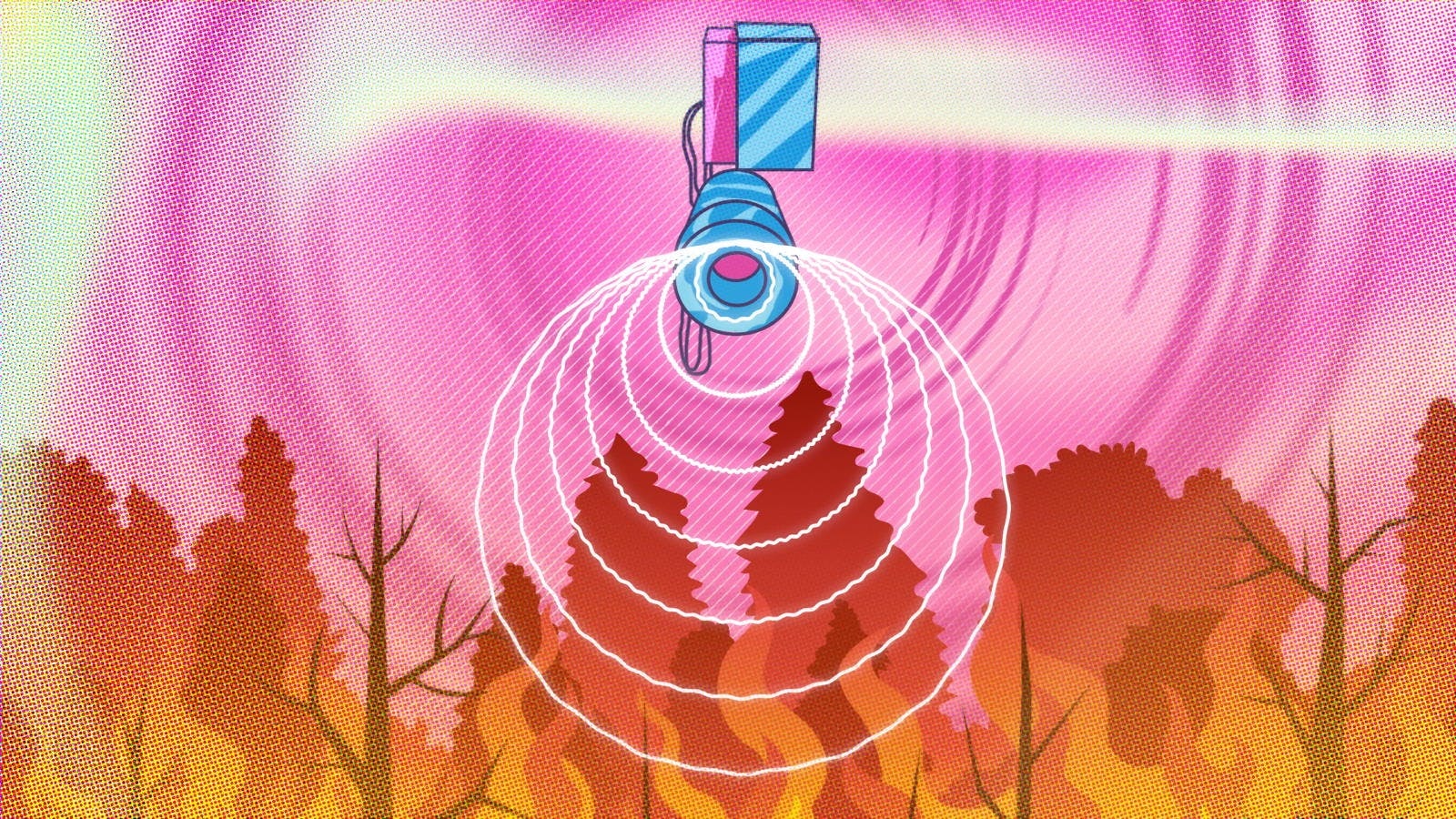Three emerging technologies for coping with an ultra 🔥 future

TOPICS
ForesightClimate change-fueled heat waves are breaking records worldwide. If their frequency and intensity keep increasing, these three emerging technologies—identified by L’Atelier’s technology intelligence tool—will get their big break sooner than we expect.
If you’ve never heard of the technologies detailed below, you’re not alone: They are super-emerging. Some have been on calm, nondescript development trajectories. But as the reality of living in a climate-altered world gets more urgent, technology buffs and investors will be happy to find solutions like these warming the bench, ready to help cool us all.
Acoustic fire extinguishers
Heat waves increase the risk of other disasters, such as droughts and wildfires. This technology addresses that issue by putting out fires without a single drop of water. The acoustic fire extinguisher uses low-frequency sound waves to momentarily displace oxygen, removing the fuel a fire requires to burn.
DARPA has been working on the acoustic suppression of flames since 2008. A portable device was engineered in 2015 by Seth Robertson and Viet Tran, for a senior research project at George Mason University in Virginia.
In a video that went viral at the time, they demonstrated how their tool can put out small fires:
Interest in developing the technology has yet to pique. Over the past decade, around 20 academic papers have been produced, including one by Polish university students Paweł Stawczyk and Jacek Wilk-Jakubowski, which elaborately details how acoustic extinguishing works. They acknowledge that scaling the technology to wildfire levels may not be realistic at the moment, though it could be a great solution for server fires and flare-ups in buildings.
Still, many believe it can be done. It just requires more funding to level up. Interestingly, China has become the technology’s number-one patenter, ahead of the US.
Thermoregulatory clothing
Our data indicates that while the field of temperature-adaptive materials is quite spoiled funding-wise, the subfield of thermoregulatory clothing—textiles designed to maintain an optimal body temperature for performance and comfort—leaves grant-issuers and researchers less enthused. The latter has seen fewer than 20 papers published over the past 8 years, and less than 2M€ invested.
It would be shortsighted to think temperature-adaptive clothing isn’t an urgent need, nor a promising future arena. “Climate active textiles” is a dynamic field of research at MIT’s Self-Assembly Lab.
In April 2023, cities in Morocco experienced 41°C heat; parts of Thailand approached 46°C. As more countries hit 40°C before summer even starts, the clothing industry will require novel, quick adaptations for cooling bodies. Linen shirts and bucket hats won’t do the job.
Multiple thermoregulatory clothing options have been tested in the last five years. In 2020, Manchester University scientists developed a prototype garment using graphene's heat- and electricity-conducting properties. The garment adapts to the wearer’s body temperature, releasing heat in hot weather while retaining heat in cold climates. The team demonstrated they could adjust this by applying electricity to graphene layers on the fabric.
In a 2023 article, researchers proposed clothing that adjusts to temperatures with special materials called "metalized polyethylene actuators," which adapt to the different ways heat escapes from our bodies (like convection, radiation, and sweat evaporation).
These innovations could not only help people cope with extreme temperatures; they could reduce energy consumption for heating and cooling in buildings.
Passive radiative cooling paint (PRCP)
The quest to find the whitest white could actually help cool us down. Purdue University researchers developed a passive radiative cooling paint (PRCP), an ultra-white paint that reflects 98,1 percent of sunlight, effectively radiating heat away. The paint can cool surfaces to 8°C below ambient temperature.
Similarly, an Israeli startup called SolCold developed a light-filtering coating that uses sunlight to cool structures. The paint consists of two layers: An outer one that filters rays, and an inner one that cools material by converting heat into light. When the paint is hit by a photon, it responds with a higher-frequency photon, causing it to lose its own energy and cool down.
In other words—the more sunlight hits it, the cooler it gets.
Passive radiative cooling paints is electricity-free and can be used in numerous industries, including construction, automotive, and even in supply chains, where PRCP-coated systems can self-cool themselves, and potentially even merchandise. While overall, passive radiative cooling solutions remain hyper-emergent (few papers have been published), related patents have grown steadily since 2013. Further research and investment need doing to help the technology mature.
All these technologies remain in relative infancy; much needs to happen before they can serve us daily, but a more targeted focus in their direction could expedite their progress.
While we celebrate the innovative genius each of these solutions represent, they’re also a bitter reminder of their necessity in a crisis that seems to be exponentially worsening. We can only yearn for a world where such inventions aren’t needed—one where futures are designed with environmental cohesion, rather than extraction, in mind.
Data on publications and patents courtesy of The Lens. Investment data: Pitchbook.
07 Sep 2023
-
Nathalie Béchet
Illustration by Thomas Travert.
Every week, an email to keep you ahead of the curve.
02/03
Related Insights
03/03
L’Atelier is a data intelligence company based in Paris.
We use advanced machine learning and generative AI to identify emerging technologies and analyse their impact on countries, companies, and capital.


